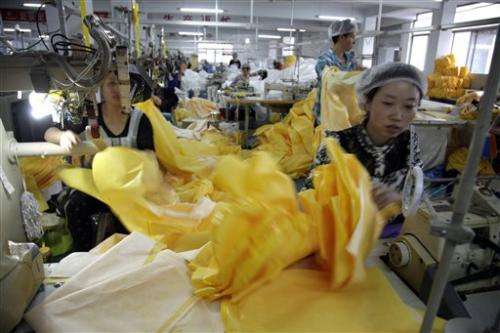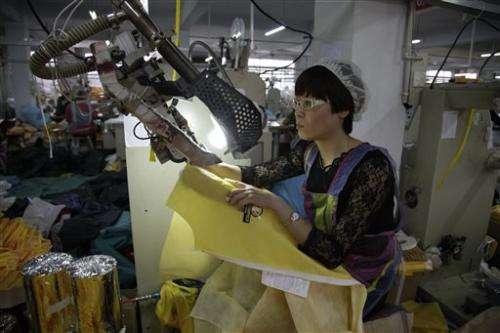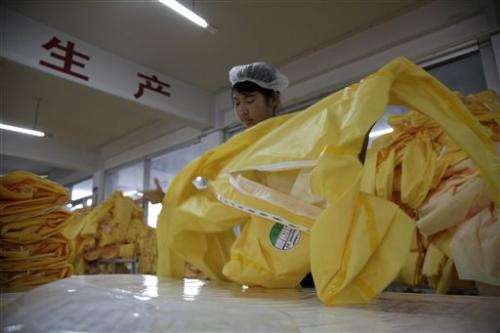China factory whirs overtime to make Ebola suits

Far from the Ebola hot zone, the sewing and gluing machines at a factory in China have been whirring more than usual to produce crucial yellow suits that protect the front-line medics more than 11,000 kilometers (7,000 miles) away in West Africa.
The Weifang Lakeland Safety Products factory in the eastern Shandong province city of Anqui has 100 workers assembling the now-familiar plastic suits at a rate of about 6,000 per day. The factory plans to double its capacity by January.
Each is carefully put together by people and machines so that it is completely sealed, because any gap could allow exposure to a deadly illness. Each seam is sewn and then reinforced with a glue strip.
"The double zipper design allows you to open the suit from the bottom when you need to take something from inside the suit," factory general manager Wang Ximin told a visitor. "We put an adhesive strip along the front flap in order to better seal off the front to make sure contamination is not able to penetrate."
"You can spread your legs and squat down easily in the suit. It feels very comfortable to wear," he said. "Very comfortable."
The ChemMAX and MicroMAX protective suits, made of polyethylene and polypropylene, are produced for the U.S.-based Lakeland Industries, a main supplier of suits in the Ebola outbreak.
Wang said current production already is about 30 to 40 percent above the same period last year, and that the production will double again by January. Demand has soared, not only for use in Africa, but from medical facilities in the United States and Europe.
"We are very proud that the protective suits we manufacture can be used by those who are fighting against Ebola," he said.
Nearly 5,000 people have died of the disease, and an additional 13,676 confirmed, probable or suspected cases of infection had been reported in the three hardest-hit countries of Guinea, Liberia and Sierra Leone.
-

In this photo taken Thursday, Oct. 30, 2014, a Chinese worker manufactures protection suits that meet the standards for use by healthcare workers treating Ebola patients at a factory of U.S. based Lakeland Industries in Anqiu city in eastern China's Shandong Province. Far from the Ebola hot zone, the sewing and gluing machines at a factory in China have been whirring more than usual to produce crucial yellow suits that protect the front-line medics more than 11,000 kilometers (7,000 miles) away in West Africa. (AP Photo/Wayne Zhang) -

In this photo taken Thursday, Oct. 30, 2014, a Chinese worker manufactures protection suits that meet the standards for use by healthcare workers treating Ebola patients at a factory of U.S. based Lakeland Industries in Anqiu city in eastern China's Shandong Province. Chinese characters at top reads "Production". Far from the Ebola hot zone, the sewing and gluing machines at a factory in China have been whirring more than usual to produce crucial yellow suits that protect the front-line medics more than 11,000 kilometers (7,000 miles) away in West Africa. (AP Photo/Wayne Zhang)
© 2014 The Associated Press. All rights reserved.

















